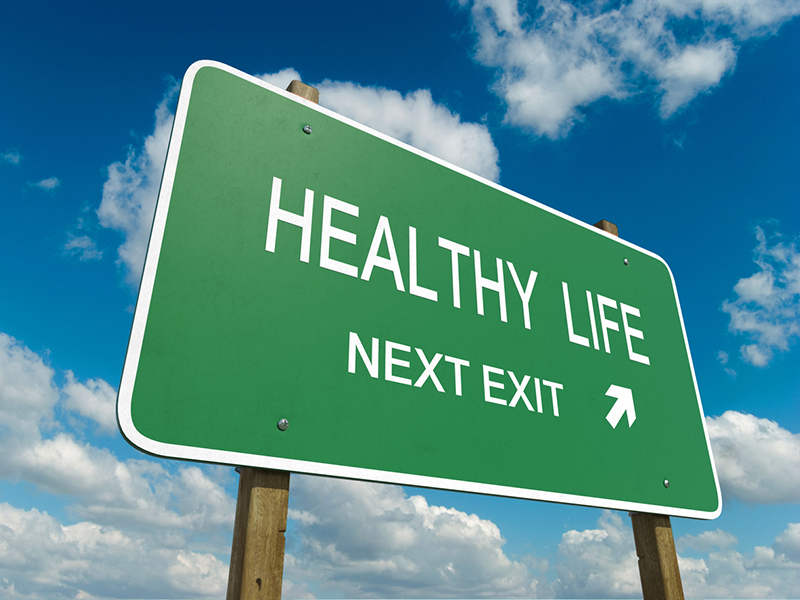
Nov 10, 2025 | Southern Arizona
If you’ve smoked for years, you may wonder if quitting now will really help. The answer is absolutely yes.
Your body begins healing almost immediately after your last cigarette, improving circulation, oxygen levels, and lung health within hours. Over time, quitting smoking dramatically reduces your risk of lung cancer, heart disease, and stroke.
Here’s what happens to your body when you quit smoking—and how you can stay smoke-free for life.
20 Minutes After Quitting: Your Heart and Circulation Respond
Just 20 minutes after your final cigarette, your heart rate and blood pressure start to return to normal. Blood flow improves, and your hands and feet may feel warmer as circulation increases.
8–12 Hours: Oxygen Levels Improve
Within half a day, the level of carbon monoxide in your blood drops significantly, allowing oxygen to reach your heart, muscles, and brain more effectively.
You may notice your first nicotine cravings around this time. They usually last only a few minutes. Try deep breathing, drinking water, or taking a short walk until they pass.
1–2 Days: Nicotine Clears Out
After one full day without smoking, your risk of heart attack already starts to drop. Within 48 hours, nicotine leaves your system completely. Your sense of taste and smell begin to sharpen as damaged nerve endings start to recover.
This can be the hardest phase for withdrawal symptoms like irritability or restlessness. Reach out for support through the National Cancer Institute Quitline (1-877-44U-QUIT) or the Arizona Smokers’ Helpline (1-800-55-66-222).
3 Days: Breathing Becomes Easier
By day three, your lungs start to work more efficiently, and you may find it easier to breathe or exercise.
2 Weeks to 3 Months: Strength Returns
Your lung function continues to improve, circulation gets stronger, and physical activity feels easier. This period brings major progress—the hardest withdrawal symptoms are behind you, and your heart attack risk continues to fall.
3 to 9 Months: Lung Health Rebuilds
As your lungs heal, you may cough less, or more productively, as your body clears mucus and toxins. You’ll likely have more energy, fewer colds, and better breathing.
1 Year: Your Heart Thanks You
After one year smoke-free, your risk of coronary heart disease is about half that of someone who still smokes.
5 to 10 Years: Lower Cancer and Stroke Risks
By year five, your risk of stroke drops significantly. After ten years, your risk of dying from lung cancer is about half that of a continuing smoker. Your chances of developing cancers of the mouth, throat, and bladder also decrease.
15 Years: Heart Disease Risk Nearly Normal
Fifteen years after quitting, your risk of coronary heart disease is close to that of a lifelong non-smoker. Your body has done incredible healing work—step by step.
Quitting After a Cancer Diagnosis Still Helps
If you’ve been diagnosed with cancer, quitting can still improve your outcomes. Patients who quit after diagnosis often respond better to treatment and experience fewer complications.
At Arizona Oncology, we can connect you with personalized smoking cessation programs, behavioral counseling, and medications to help you quit for good.
FAQs About Quitting Smoking
Q: What if I only smoke socially?
A: Even occasional smoking can harm your heart and lungs. There’s no safe level of tobacco use. The good news? Your body starts healing as soon as you quit completely.
Q: Is there screening for lung cancer?
A: Yes. A low-dose CT (LDCT) scan can detect lung cancer early, when treatment is most effective. If you are between 50 and 80 years old, have a 20-pack-year smoking history, and currently smoke or quit within the last 15 years, ask your provider about LDCT screening.
Learn more about lung cancerat Arizona Oncology.
Q: What is the best way to quit?
A: The most successful quit plans combine support, strategy, and medication. Nicotine replacement therapies, prescription medications, and counseling can double your chances of quitting for good. Call:
- Arizona Smokers’ Helpline: 1-800-55-66-222
- National Cancer Institute Quitline: 1-877-44U-QUIT
Take the First Step Today
Whether you’ve been smoking for months or decades, quitting is one of the most powerful decisions you can make for your long-term health. Your body begins to heal within minutes, and your future self will thank you.

Oct 21, 2025 | Southern Arizona
This Breast Cancer Awareness Month, we’re highlighting several groundbreaking developments that were introduced at the 2025 American Society of Clinical Oncology (ASCO) annual meeting. Over 40,000 oncologists, scientists, and breast cancer patient advocates came together to discuss advancements in breast cancer research, early detection, and cutting-edge treatments, offering hope to individuals diagnosed at every stage, from early disease to metastatic breast cancer. Let’s take a look at some of the 2025 wins.
Exercise and Lifestyle Factors
The CHALLENGE clinical trial, conducted with colon cancer survivors, may help shed some light on breast cancer recurrence. This robust study looked at exercise and how it might affect quality of life and outcomes. Participants were randomized, with some assigned a physical activity level and trainer for three years. Several biomarkers were tracked, including insulin levels, weight, and glucose levels, and participants could choose their type of activity—for example, walking or strength training. After many years of follow-up, the results showed that the patients who had engaged in physical activity had reduced recurrence rates and improved survival rates.
This is particularly interesting as similar ongoing trials involving breast cancer patients are underway, including the Breast Cancer Weight Loss (BWEL) trial, a randomized, controlled trial designed to determine whether weight loss after breast cancer diagnosis can reduce the risk of cancer recurrence in women who are overweight or obese.
Right-sizing Treatment
Bigger isn’t always better, and more treatment doesn’t always lead to improved outcomes. Much discussion circulated at the ASCO meeting surrounding right-sizing treatment, especially for patients with early cancer. Because chemotherapy and other cancer treatments can cause harm, it’s important to balance toxicity with expected benefits. The CompassHER2-pCR trial is exploring whether some people with early HER2-positive breast cancer may be able to safely avoid chemotherapy after surgery if their tumors respond well to initial treatment with THP (trastuzumab, pertuzumab, and chemotherapy). Researchers are also evaluating a new genomic test, HER2DX, to see if it can predict which cancers are most likely to disappear after the first round of therapy. Early findings are encouraging, pointing toward more personalized—and potentially less aggressive—treatment options.
Sometimes the answer lies not in which medications to prescribe, but in proper dosing. For women with high-risk endocrine-sensitive breast cancer, for example, CDK4/6 inhibitors may be incorporated into a therapy regimen, but they can be difficult to tolerate. Studies looked at ramping up the dose more slowly, over time, to reduce toxic effects. This helps patients to successfully stay on their medications rather than discontinuing them due to side effects or toxicity.
A Focus on Quality of Life
It is always important to remember that we are treating people, not just a disease. Focusing on maximizing quality of life during and after treatment was a priority at this year’s meeting. The phase 3OASIS-4 trial found that a new drug, elinzanetant, can significantly reduce moderate to severe hot flashes in women with early estrogen receptor-positive (ER+) breast cancer who are taking hormone therapy. Participants also reported the treatment was generally well tolerated. Elinzanetant is one of several emerging options aimed at making hormone therapy more manageable and improving quality of life.
Here are some other notable takeaways:
- The VERITAC-2 trial showed that the new drug vepdegestrant extended progression-free survival by about three months compared to fulvestrant in people with ER+/HER2- advanced breast cancer with ESR1 mutations, with few discontinuations. An added benefit: the drug is taken orally rather than in monthly injections.
- The SERENA-6 trial suggests that analyzing circulating tumor DNA (ctDNA) may help detect treatment resistance in metastatic breast cancer before it appears on scans, offering a promising approach for earlier, more personalized treatment decisions.
- The DESTINY-Breast09 trial showed that first-line treatment with trastuzumab deruxtecan plus pertuzumab extended progression-free survival to 40.7 months in HER2+ metastatic breast cancer, compared with 26.9 months for the previous standard therapy.
Sign up for our newsletter to receive more news, tips, and helpful blog posts related to your or a loved one’s cancer journey.
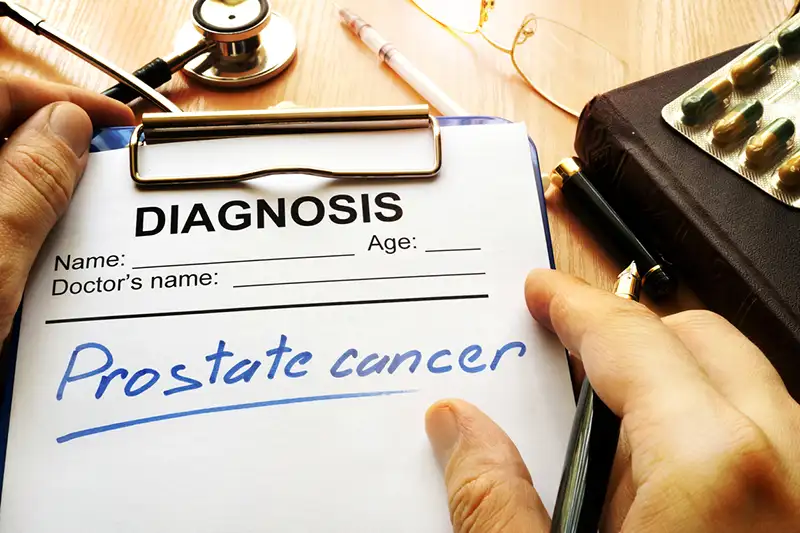
Sep 15, 2025 | Southern Arizona
At Arizona Oncology, we know a prostate cancer diagnosis may feel overwhelming. Our physicians are relentlessly dedicated to delivering the best care possible for each patient’s individual needs. That’s why our multidisciplinary tumor board committee includes experts in urology, medical oncology, radiation oncology, radiology, and pathology, who all work together to develop your optimal treatment plan.
We are proud to offer a leading-edge treatment for prostate cancer. It combines the use of PET scans and a new therapy targeting prostate-specific membrane antigen (PSMA)-positive cancer cells that have spread and become resistant to other forms of treatment.
Pluvicto™ is the first and only treatment that targets PSMA+ cancer cells wherever they are in the body.
PSMA is a protein on the surface of most positive prostate cancer cells. This new therapy, which was approved by the US Food and Drug Administration in March 2022, uses a tracing agent (ligand) that attaches to PSMA. If this tracer binds to the cancer cells, they light up on a PET/CT scan, and patients are then eligible for a drug called Pluvicto™. This medication is injected into the bloodstream to deliver targeted radiation to cancer cells throughout the body that express PSMA. The treatment targets bone, nodal, and visceral metastases.
Who Qualifies For Pluvicto™?
Adults with prostate-specific membrane antigen-positive metastatic castration-resistant prostate cancer (PSMA-positive mCRPC) that:
- Has spread to other parts of the body (metastatic)
- Has already been treated with other anticancer treatments
How Does Pluvicto™ Work?
- Pluvicto™ is a targeted therapy that delivers radiation treatment directly to PSMA+ cells, including tumors.
- It is given via IV injection or infusion approximately every six weeks for up to six treatments, depending on how the patient responds.
What Kind of Results Has Pluvicto™ Produced?
Pluvicto™ has helped men live longer:
- Men with PSMA+ mCRPC who received Pluvicto™ and the best standard of care, lived a median of 4 months longer: 15.3 months vs. 11.3 months with BSoC (best standard of care) alone.*
- Men treated with Pluvicto™ plus BSoC lived longer without their cancer growing or spreading—a median of 8.7 months compared with 3.4 months when on BSoC only.**
With this treatment, the doctors at Arizona Oncology hope your prostate cancer diagnosis can feel a little less overwhelming.
Other state-of-the-art treatments for prostate cancer that we offer include:
Multiparametric MRI – This scan combines several MRI techniques into one session, providing a more comprehensive way to detect and evaluate tumors.
Prostate-specific membrane antigen (PSMA) PET-CT – A tracing agent is used during imaging to detect prostate cancer cells in the body with high specificity and sensitivity, allowing for a more accurate picture of where the cancer is located.
Hydrogel (Barrigel) rectal spacer placement – A biodegradable hydrogel is placed between the prostate and the rectum to create space and reduce radiation exposure to the rectum.
Fiducial placement – Small markers are placed in the prostate gland to help guide radiation treatment.
Stereotactic body radiation therapy (SBRT) – A highly complex, convenient and short course (five sessions) of radiation therapy to maximize effectiveness in the prostate gland while minimizingside effects to surrounding healthy tissue.
Xofigo® – This drug is injected into the bloodstream and is used to treat prostate cancer that has spread to the bone.
Medically integrated dispensing pharmacy – We fill prescriptions for Orgovyx® (relugolix), Xtandi®(enzalutamide), Zytiga® (abiraterone acetate), Erleada® (apalutamide), Nubeqa® (darolutamide).
*The Pluvicto™ clinical study measured overall survival (OS). This is the total time men with metastatic prostate cancer were alive from the start of treatment. Median OS is the length of time half of the men were still alive. In a study of 831 men with PSMA+ metastatic prostate cancer, 551 were treated with Pluvicto™ once every 6 weeks (up to 6 treatments) plus BSoC as determined by their doctor. Another 280 were treated with BSoC alone.
**The Pluvicto™ clinical study measured radiographic progression-free survival (rPFS). This is the length of time men in the study lived with PSMA+ mCRPC without it spreading or getting worse. Median rPFS is the length of time when half of the men were still alive without their cancer spreading or getting worse.
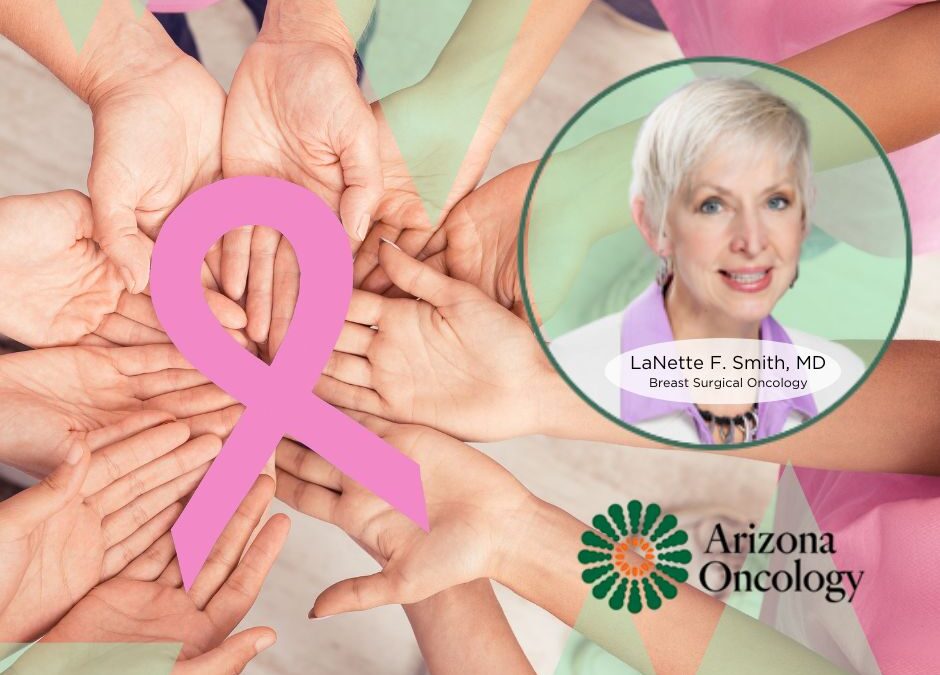
Aug 11, 2025 | Southern Arizona
Q&A with Breast Surgical Oncologist LaNette F. Smith, MD
Most women, when faced with a breast cancer diagnosis, want to know what their surgical options are. While the majority have a general understanding of terminology such as “lumpectomy,” “mastectomy,” and “double mastectomy,” much nuance exists within those larger categories, and new techniques, innovations, and options continue to develop.
Dr. LaNette Smith, breast surgical oncologist at Arizona Oncology, shares updated information about breast cancer surgery and the choices available to patients, as well as information she wants every breast cancer patient to know.
What types of breast surgery are available to women with breast cancer?
Dr. Smith points out that a multitude of variations exist under the umbrella of lumpectomy and mastectomy.
For patients undergoing a lumpectomy, she points to oncoplastic procedures as an option that may provide the best cosmetic outcome. Oncoplastic techniques combine cancer removal with plastic surgery to reshape the breast immediately after the tumor is removed. These techniques can include:
- Tissue rearrangement
- Reduction/lift (especially if the breasts are large)
- Matching procedure on the opposite breast for symmetry
For patients undergoing mastectomy, Dr. Smith points to several variations of reconstruction, most of which can be done at the time of the mastectomy by a combination team of surgical oncologist and plastic surgeon.
- Aesthetic flat closure. Also referred to as post-mastectomy chest wall reconstruction, this technique can be done at the time of the mastectomy or a few months later. The surgeon removes extra skin, pockets of fat, and excess tissue while smoothing out what remains to create a flat chest wall contour. This technique works well for patients with a higher BMI, larger breasts, a tumor located close to the chest wall, and/or when radiation therapy has affected skin and tissue quality in the surrounding area.
- Implant-based reconstruction. “Locally in Prescott, we have resources to perform tissue expander and direct implant reconstructions along with mastectomy,” says Dr. Smith. This allows implants to be placed directly following the mastectomy, during the same surgery. Newer techniques involve placing the implant on top of the chest muscle instead of under it. “This involves much less pain and is an easier recovery,” Dr. Smith says.
- Autologous tissue transfer reconstruction. An alternative to implants, autologous tissue transfer involves using tissue from another area of the body to rebuild the breast. Tiny blood vessels are connected to establish blood flow to the transplanted tissue.
“Most patients are very happy with reconstruction,” Dr. Smith says. She adds that variations of techniques for both nipple preservation and sometimes nerve sensation can be accomplished.
Are there any new developments that women should know about?
According to Dr. Smith, the new developments in breast cancer surgery involve reducing the number of surgeries, in certain circumstances. For example, sentinel node biopsy, a procedure performed to detect cancer in the lymph nodes, can disrupt the lymphatic system, producing lymphedema—a build-up of fluid in the arm, chest, or armpit area.
“We have studies now such as the SOUND trial which allow us to perhaps omit sentinel lymph node biopsy for women who have nodes that seem negative by imaging. This lowers the risk of lymphedema for the patient,” Dr. Smith explains. This is often recommended for patients over the age of 70 with estrogen-positive breast cancers and clinically negative lymph nodes.
“Further, recent publication of the COMET trial supports that the potential for active monitoring for certain patients with hormone receptor-positive grade 1 or grade 2 DCIS is not inferior to surgery. We also have significant data that supports the potential for omission of radiation for selected women with favorable breast cancers. These patients are typically over 70 with smaller estrogen receptor-positive tumors that are lymph node-negative,” Dr. Smith says.
“The use of immune therapy for patients with triple-negative breast cancers can be quite effective for converting women who start off with positive nodes to node-negative prior to surgery,” she goes on to add. “This allows for removal of fewer lymph nodes and a lower risk of lymphedema for the patient.”
What should women consider in order to make the best decision?
Dr. Smith urges breast cancer patients to make their treatment decisions in close consultation with their team of physicians. “I would caution patients about advice from lay people who perhaps had an entirely different type of breast cancer or were treated at a time when guidelines were different. While these people are well-meaning, they can sometimes cause confusion.”
She recommends bringing a reliable partner or friend to all appointments who can talk through decisions with you. “We always welcome patients to have second opinions from other board-certified medical professionals trained in the treatment of cancer, if desired,” she adds.
What are some things that patients found surprising after surgery?
“Many patients are surprised by how quickly they recover from the surgery,” says Dr. Smith. She states that a large number of her lumpectomy patients only take Tylenol for post-operative pain. “They are also often surprised about how little time the actual surgery takes,” she adds.
What is something you tell all of your patients who are undergoing surgery for breast cancer?
Dr. Smith points out that surgery is just one event in the journey of breast cancer. “Rarely is surgery the only modality we use to treat breast cancer,” she explains. “For the surgery itself, we always want the patient to know we will do our very best to take excellent care of her.”
It’s not just the surgeon who is committed to an optimal outcome, she adds. A dedicated team, from nurses to imaging specialists to office staff, all work together to ensure treatment goes as smoothly as possible. “These individuals are a key part of the team,” she says.
What is the best thing women can do for their recovery?
“Take it a day at a time,” Dr. Smith advises. And, in the long run, she recommends eating healthy, exercising, and staying up-to-date on follow-up exams and appointments.
To learn more about Dr. Smith and the team of breast cancer specialists at Arizona Oncology, visit arizonaoncology.com.
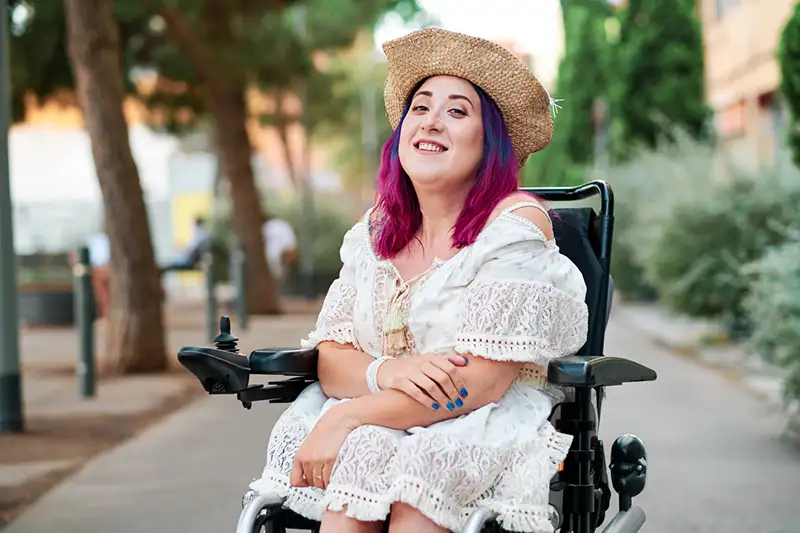
Jul 11, 2025 | Southern Arizona
Every July 26th, we honor Disability Independence Day—the anniversary of the signing of the Americans with Disabilities Act (ADA) in 1990. This landmark legislation broke barriers for millions of Americans living with disabilities, affirming their right to access, dignity, and independence.
For many cancer patients and survivors, the topic of disability is deeply personal. Whether temporary or long-term, visible or invisible, disabilities can be part of the cancer journey. But disability does not mean defeat. On the contrary, many patients discover new depths of resilience, adapt to life in remarkable ways, and find renewed purpose in their path forward.
Understanding Cancer-Related Disabilities
Cancer and its treatments can impact the body in countless ways, and those effects may linger long after treatment ends. Some patients experience short-term impairments that resolve over time, while others live with chronic or permanent disabilities resulting from their diagnosis or treatment.
Here are just a few of the ways cancer can intersect with disability:
1. Mobility Challenges
Surgery, bone cancer, metastatic disease, or treatment-related nerve damage can cause difficulty walking, standing, or performing daily tasks. Amputations or spinal tumors may result in partial or full loss of mobility.
2. Cognitive Impairment (“Chemo Brain”)
Some cancer treatments cause lingering issues with memory, concentration, and mental clarity. Often referred to as “chemo brain,” this cognitive fog can interfere with work, relationships, and daily routines.
3. Chronic Pain and Fatigue
Pain from nerve damage, scar tissue, or tumor pressure can become long-lasting. Similarly, cancer-related fatigue can be profound, making even simple tasks feel overwhelming.
4. Lymphedema
Certain cancers can result in lymphedema, a lymphatic system disruption that can cause painful swelling, affect limb movement, and increase the likelihood of skin infections like cellulitis.
5. Sensory or Speech Changes
Some treatments impact speech, hearing, or vision. Head and neck cancers may affect facial movement or voice, while radiation and chemotherapy can impact hearing or eyesight.
6. Emotional and Psychological Effects
Depression, anxiety, PTSD, and trauma-related disability can develop during or after cancer care. Mental health is health—and it should be recognized and supported.
Embracing a New Definition of Independence
Disability can be a difficult label to accept—especially for those who didn’t identify with it prior to cancer. But the truth is, independence isn’t defined by what you can do alone. It’s about living with dignity, having access to the support you need, and continuing to engage meaningfully with the world around you.
Through physical therapy, occupational therapy, assistive devices, mental health care, and community support, many survivors find new ways to thrive. It’s not about “bouncing back” to who you were before—but learning to move forward as you are now.
You’re Not Alone: Resources for Cancer-Related Disabilities
Navigating disability can be overwhelming, but you don’t have to go it alone. There are organizations and programs specifically designed to support cancer survivors facing new limitations:
● Cancer and Careers. Helps survivors navigate workplace issues, legal rights under the ADA, and how to communicate about disabilities at work. www.cancerandcareers.org
● American Cancer Society (ACS). Provides information on physical and emotional side effects of cancer and connects patients to local support services. www.cancer.org
● Cancer Support Community. Offers free counseling, support groups, and resources to help you cope with cancer-related challenges—including those related to disability. www.cancersupportcommunity.org
● Centers for Independent Living (CILs). Nonprofit organizations across the U.S. offering peer support, advocacy, and independent living skills training. Find your local CIL through www.ilru.org
● Social Security Disability Benefits. Cancer patients may qualify for SSDI or SSI if they are unable to work due to treatment or long-term effects. www.ssa.gov
A Message of Hope
Disability is not a weakness—it’s a reality for many people living bravely with illness. It’s a part of life that deserves understanding, inclusion, and compassion. And on this Disability Independence Day, we honor those who are not only fighting disease but also adapting, healing, and reimagining life on their terms.
You are not defined by your diagnosis or your limitations. You are defined by your courage, your perseverance, and your ability to keep moving forward—one step, one breath, one victory at a time.
If you or a loved one is facing new challenges due to cancer-related disability, reach out. Support, guidance, and strength are just a call or click away.
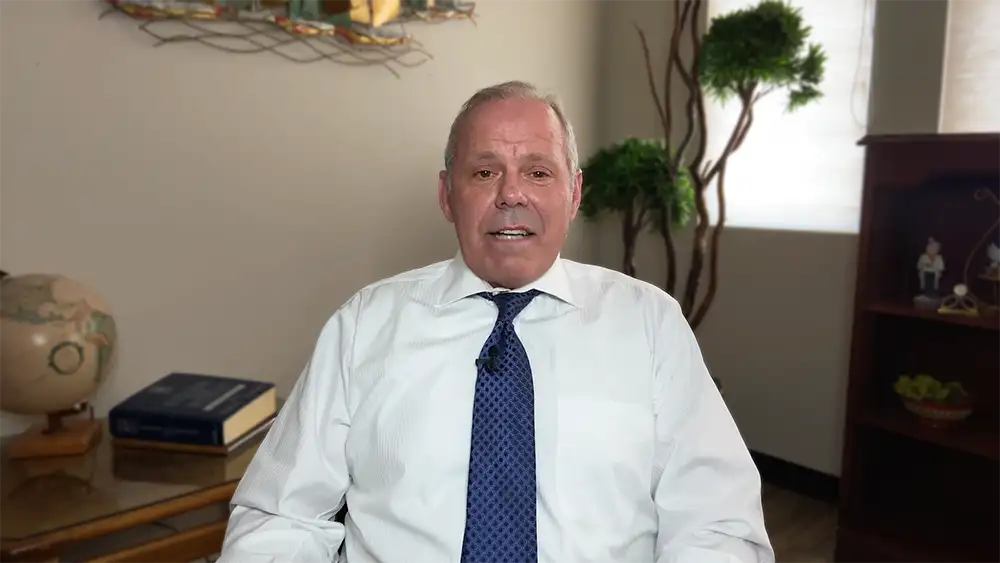
Jun 16, 2025 | Southern Arizona
At Arizona Oncology, we believe that compassion and connection should be present alongside clinical excellence. Few people embody this more than Dr. Marshall Davis, a longtime radiation oncologist based in Prescott. Dr. Davis brings not only decades of medical expertise to his patients—but also something even more powerful: personal experience. This National Cancer Survivor Month, we’d like to share his story.
Years ago, Dr. Davis found himself on the other side of the exam table. While working in the medical field, he noticed a lump during a self-exam and quickly sought out a urology colleague. Things moved fast. An ultrasound confirmed the presence of a tumor, and the next day he was in surgery to remove the cancerous testicle. Chemotherapy followed, but his battle was far from over.
Within a year, the cancer had returned—this time in his lymph nodes. He underwent additional surgery and radiation therapy, hopeful that this would be the end of it. But about eight months later, he discovered another lump, this time in his neck. It was cancer again. And so he faced another round of treatment, this time a more aggressive course of chemotherapy.
“It was right before Christmas and when I felt that lymph node, I almost cried because I’m well aware of how we treat testicular cancer when it recurs,” said Dr. Davis. “I knew my next chemotherapy regimen was going to be harsh, but it’s what I needed to do to prevent this cancer from spreading all over my body and killing me.”
Today, Dr. Davis has been cancer-free for over 12 years. But the experience has left a lasting impact—not just on his body, but on his heart and the way he practices medicine.
“You never get something for nothing,” he says, reflecting on the lingering side effects of treatment. “But you can live with the side effects. What you can’t live with is the cancer.”
His personal journey has given him a rare and invaluable perspective. When patients sit in front of him and talk about their fears—about mortality, about uncertainty, about how cancer will affect their families and their futures—he gets it. Because he’s been there.
“You worry about life, death, and everything in between,” he says. “I can tell you that having cancer and being a cancer survivor altered my outlook on how to take care of patients.”
Dr. Davis is known not just for his clinical skill but for his honesty and empathy. “You have to be honest with people about where they stand,” he says. “My philosophy is that it’s better to face up to bad news as soon as possible and then work together to come up with a plan to win the battle.”
That mix of transparency and compassion is what makes him such a valued member of the Arizona Oncology family—and such a powerful advocate for patients. His story is a reminder of how important early detection can be, and how even in the face of setbacks, it’s possible to move forward with strength and resilience.
“I am a cancer survivor – I had a very serious cancer, and received radiation therapy and chemotherapy, so I know what patients go through when they’re being treated and am very compassionate,” he says.
At Arizona Oncology, we’re proud to have physicians like Dr. Davis, who use every tool at their disposal—including their own life experience—to bring hope and healing to others. His journey is not just a story of survival. It’s a story of service, strength, and showing up for others when it matters most.
Watch a video of Dr. Davis talking about his experience here.
About Testicular Cancer:
Approximately 1 in 250 men will develop testicular cancer at some point during their lifetime, and Caucasian men are four to five times more likely to develop testicular cancer than African-American and Asian-American men. The average age of a man diagnosed with testicular cancer is 33. Approximately 6% of cases occur in children and teens, and about 8% occur in men over 55.
If detected early, testicular cancer is one of the most curable forms of cancer. With today’s treatments, testicular cancer survival rates are high, with 95% of men surviving five years after diagnosis. That number jumps to 99% if the cancer was localized in the testicle.
Page 1 of 1812345...10...»Last »








